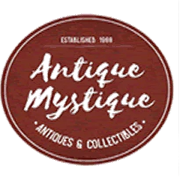Tiffany Lamps
by Dallas Middaugh
Louis Comfort Tiffany was the son of Charles Lewis Tiffany, owner of that famous jewelry store of screen and song. While the younger Tiffany could have chosen to live a life of leisure, funded by the family's considerable wealth, he embarked instead on a path that would bring him almost as much fame as his father. Today, L.C. Tiffany is one of the best-known stained glass artists in the world, and his work is both much sought after and imitated. Examining Tiffany's many types of art glass could fill ten AuctionWatch.com Collector's Beat stories, so will focus today just on his stained glass lamps.
One Invention Edison Didn't Steal Tiffany spent many years cultivating his talent for stained glass, but it wasn't until his collaboration with Thomas Edison that the idea of creating a stained glass lamp shade occurred to him. Together Edison and Tiffany had already helped to create the first movie theater, the Lyceum, when Edison realized that the multicolored glass with which Tiffany worked would be ideal for a lamp. Tiffany agreed and implemented the idea in his factories. The lamps were highly successful, and Tiffany began to mass produce them, with the goal of having a Tiffany lamp in every home.
Lamp Shade Art Tiffany lamps weren't cheap, even back in the late 1890s when they were first produced, and they remained the province of the wealthy--and of museums, to which Tiffany frequently donated pieces. The lamps consisted of essentially two parts: the base and the shade. The base was typically made of bronze, while the shade consisted of a multitude of pieces of Favrile glass (this being a term Tiffany had created to describe his handmade glass) soldered together in a bronze framework. Often similar patterns were used, the most famous of which is a series of interconnected dragonflies. Other patterns included the use of the Zodiac or bamboo and apple blossoms or wisteria. These latter two included bases shaped as tree trunks, which were not sold as widely as other patterns, making them exceptionally valuable today.
How Much Are They Worth, Anyway? An original Tiffany lamp in museum-quality condition can be worth a lot. In 1985, the "Magnolia" sold for over $500,000 at auction, while more recently, the "Zinnia" sold for over $1 million! Less rare pieces can still command prices in the tens of thousands of dollars if they are in good shape and authentic. Identification can be difficult, though, as Tiffany was not consistent in how he signed his work, sometimes using initials, other times the company name, and still other times opting for no signature at all. Major auction houses specializing in art glass, such as Butterfield & Butterfield, Sotheby's, and Christie's, often contend with reproductions submitted for auction with forged signatures.
Original Tiffany lamps will be out of the price range of the average collector, which makes it all the better that his work has been an inspiration for so many modern-day glass artisans. Finding a Tiffany-style lamp is not difficult. In fact, some of the cheapest imitations can be found in stores like Target or Wal-Mart. Not surprisingly, these are the least likely to appreciate in value. Many studios continue to mass produce Tiffany-style lamps in a manner similar to the master himself. Moreover, because varying glass is used and each is still handmade, there is a near infinite variety available to you.
Tiffany-style lamps are a respectable investment. For the past several years, their prices have grown at a rate exceeding that of inflation. Nonetheless, it is unlikely any single piece will increase in value to the level of an original Tiffany work as the market is relatively saturated. In the final analysis, fine-crafted Tiffany reproductions are a worthwhile investment if you consider the enjoyment they will provide over the long term. Then if you want to sell it five years down the road, you'll see as much as a 50 percent return on your investment. Not bad!
Dallas Middaugh is a frequent AuctionWatch.com contributor and freelance writer specializing in collectibles.

